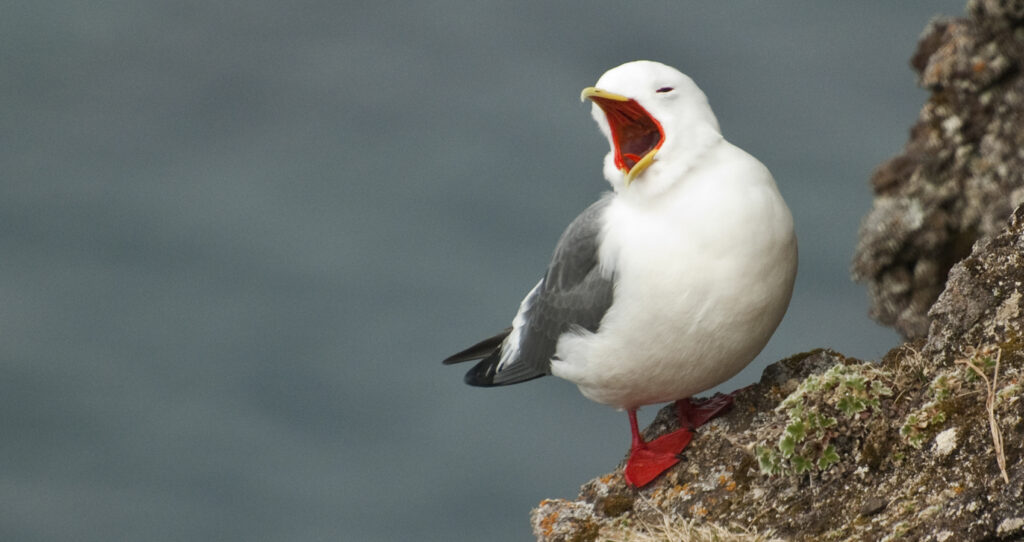
Main Tour Dates: Mon 10th – Fri 21st June 2024 (Anchorage to Anchorage)
Main Tour Price: £6150pp plus internal flights.
Estimated International Flight Price: London to Anchorage approx. £1,000 return
St Paul Island Extension Dates: Monday 24th – Friday 28th June 2024 (Anchorage to Anchorage)
St Paul Island Extension Tour Price: £2,675pp plus internal flights
Estimated Internal Flight Extension: Anchorage – St Paul – Anchorage: 1,300USD
Deposit: £1,000 per person
Conservation Donation from Wise Birding: £275
Minimum Number: 6 people
Maximum Group Size: 8 people
Target Species for both main tour and extension
Birds: Yellow-billed Loon, Spectacled Eider, Steller’s Eider, King Eider, Harlequin Duck, Horned Puffin, Tufted Puffin, Crested Auklet, Parakeet Auklet, Least Auklet, Rhinoceros Auklet, Marbled, Murrelet, Ancient Murrelet and Kittlitz’s Murrelet, Brunnich’s Guillemot, Pigeon Guillemot, Red-faced Cormorant, Emperor Goose, Gyrfalcon, Willow and Rock Ptarmigan, Slaty-backed Gull, Sabine’s Gull, Red-legged Kittiwake, Snowy Owl, Aleutian Tern, Long-tailed Skua, Pacific Golden-Plover, Western Sandpiper, Rock Sandpiper, Bristle-thighed Curlew and more!
Mammals: Arctic Fox, Arctic Ground Squirrel, Muskox, Humpback Whale, Orca and maybe Beluga Whale. Plus chances of Polar Bear and Brown (Grizzly) Bear.
Tour Summary
Alaska has to be on every birder’s wish list as it has many outstanding birds, stunning scenery, almost 24 hour daylight and great potential to find rare vagrants too, so come and join us! This tour focuses on three of the best birding areas in Alaska, namely Nome, Barrow and the Kenai Fjords National Park.
Nome is located on the south coast of the Seward Peninsula in northwest Alaska, just below latitude 65. The terrain consists of rolling tundra covered with grasses, willows other shrubs and an impressive array of wildflowers during the brief summer months. Key birds we will look for around Nome include: all four species of Eider, Emperor Goose, Gyrfalcon, Willow and Rock Ptarmigan, Slaty-backed Gull, Aleutian Tern, Long-tailed Skua, Pacific Golden-Plover, Bristle-thighed Curlew and more! Other wildlife we may find on the Seward Peninsula includes Brown (Grizzly) Bear, Moose, Caribou, Muskox, and Wolf.
Barrow is a birder’s paradise situated in the high arctic tundra where we should find abundant King and Common Eiders as well as the highly sought after and stunning Steller’s and Spectacled Eider. Yellow-billed Loons migrate past the point but can also be found in small numbers on freshwater pools, whilst Snowy Owls and Long-tailed Skuas patrol the tundra in search of lemmings. Displaying shorebirds will also be high on our target list with Red Phalarope, Long-billed Dowitcher, Pectoral Sandpiper and American Golden Plover. We may also get lucky with a chance of seeing a Polar Bear whilst birding in the midnight sun!
Kenai Fjords National Park will be a definite tour highlight as we take a full day boat trip in search of birds and mammals surrounded by some of the most spectacular landscapes in Alaska. We will look for Horned and Tufted Puffins, Parakeet Auklets, Thick-billed Murres, Marbled, Ancient, and Kittlitz’s Murrelets, Rhinocerous Auklets, Pigeon Guillemots, and Red-faced Cormorants. Mammals may also include Humpback Whale, Orca, Steller’s Sea Lion and Sea Otter.
For those joining the St. Paul Island extension, more seabird spectacles await us!
ST. PAUL ISLAND: is one of the Pribilof Islands and is home to literally thousands of seabirds nesting in easily observed colonies along the steep shores of the island. There are numerous vantages and blinds on St. Paul Island from which to view and photograph these amazing sights. The Pribilofs are the only readily accessible North American location where Red-legged Kittiwakes nest. Other nesting species we should see include the Red-faced Cormorant, Common and Brunnich’s Guillemot, Parakeet, Least and Crested Auklet, Horned and Tufted Puffin and Ancient Murrelet. We will also look out for the endemic races of Pacific Wren, Rock Sandpiper and Gray-crowned Rosy-Finch. The Pribilofs are also home to about 700,000 northern fur seals, which breed on the islands and Arctic foxes are common.
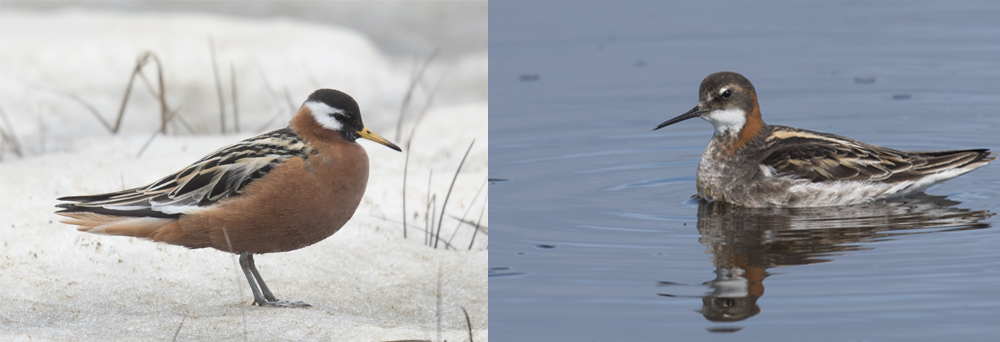
Main Tour Accommodation: 11 nights
1 night Anchorage, 3 nights Nome, 2 nights Seward, 3 nights Barrow and 2 nights Anchorage
St Paul Island Extension Accommodation: 4 nights
3 nights St Paul Island and 1 night Anchorage
Inclusive Meals: Breakfasts and lunches on main tour.
See bottom of page for extension meals.
DAY 1: Arrival Day
Today is primarily an arrival day with a transfer to our hotel. However, dependent on arrival times, we may head out for some local birding. If the tide is in our favour, we will look for shorebirds in Anchorage which may include breeding Short-billed Dowitcher and Hudsonian Godwit. If we have more time available there is a chance of reaching some Boreal Forest where American Three-toed and Black-backed Woodpeckers and Spruce Grouse are possible. After dinner in town we will then rest at our hotel ready for the local flight to Nome the following morning. Overnight Anchorage
DAY 2: Internal flight to Nome and Birding Nome
We will take a morning flight of around 80 minutes to Nome, on the Seward Peninsula in western Alaska. We will explore the start of the Council Road where some of our first Nome highlights are likely to be Eastern Yellow Wagtail, Bar-tailed Godwit, Pacific Golden-Plover and if we are lucky, Red-necked Stint too. The list of targets for this sub-arctic habitat is very impressive and includes Arctic, Pacific, Red-throated, and Yellow-billed Loons, up to four species of Eider, Emperor Goose, Gyrfalcon, Willow and Rock Ptarmigan, Slaty-backed Gull, Aleutian Tern, Long-tailed Skua, Pacific Golden-Plover and the highly prized Bristle-thighed Curlew. Passerines should include Northern Wheatear, Bluethroat and Eastern Yellow Wagtail. Mammals we will be looking for include Muskox, Brown (Grizzly) Bear, Moose and Wolf. Overnight Nome
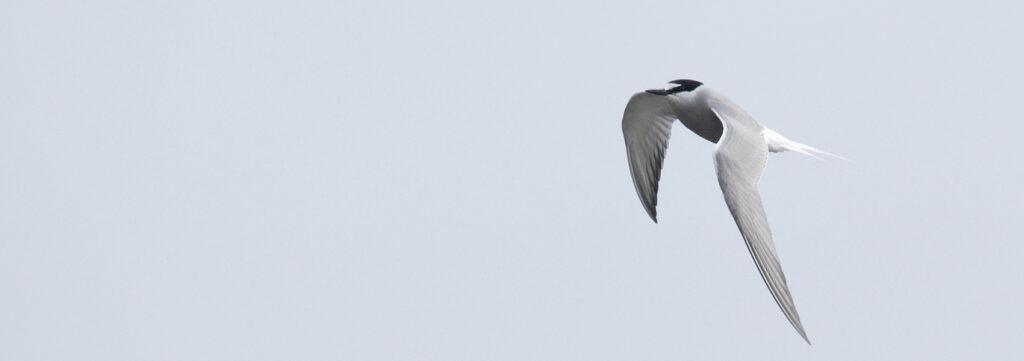
DAYS 3 & 4: Birding the Nome Area
It is possible to see all the specialities around Nome with just a 2 night stay, but our itinerary gives us more time to enjoy our birding and allows extra time if we miss anything on our first attempt. There are three main roads leaving Nome, namely the Council Road, Teller Road and Kougarok Road. We will have time birding on each of them during our time in Nome. After breakfast we will head out for the day with picnic lunches so as to maximise our time in the field. The beauty of birding in this area is that most of the targets in Nome can be found from or near the roadside! The one exception is the Bristle-thighed Curlew, which requires a moderately strenuous hike across tundra tussocks where we hope to find the bird on its breeding territory.
On one day we will travel along Kougarok Road, most famed amongst birders as the place to see Bristle-thighed Curlew. It will be an early start to give us the best chance of finding this very rare breeding bird. After hopefully being successful with the Curlew, we will then make numerous birding stops on our way back to town in search of birds such as Bluethroat, Gyrfalcon and Ptarmigan as well as commoner species such as Lapland Bunting, Golden-crowned Sparrow, Fox Sparrow and Wilson’s Warbler.
On another day, we will travel along the Council Road and visit the Safety Lagoon and nearby tundra habitat. The road follows the Bering Sea for the first 30 miles, with Safety Lagoon on the inland side of the road for much of that distance. Exciting possibilities here include Emperor Goose, all four eiders, Arctic Loon, Aleutian Tern and Slaty-backed Gull. We may also try for Arctic Warbler, a species that breeds in Nome. It is a late arriving migrant and if we find one it is often not until the last day of the trip. Overnight Nome
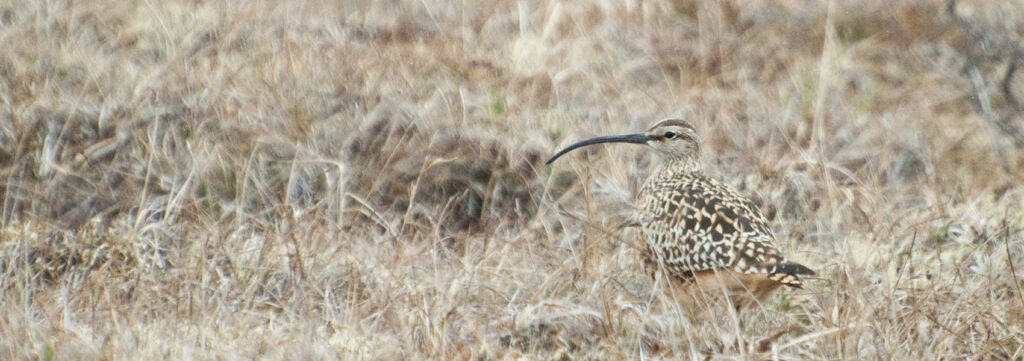
DAY 5: Morning in Nome – Return flight to Anchorage – Seward
We will take a morning flight back to Anchorage, arriving around midday.
Once in Anchorage, we will take the 130 mile drive to Seward. We will of course make numerous birding stops en route as we travel along this incredibly scenic route. The forest changes from an interior/boreal forest to coastal rainforest as we approach Seward. Possible species today include Red and White-winged Crossbill, American Dipper, Rufous Hummingbird, Chestnut-backed Chickadee, Steller’s Jay and Pacific Wren. Possible mammals today include Dall Sheep, Moose, and depending on the tide, Beluga Whales are a distinct possibility in Turnagain Arm. Overnight Seward
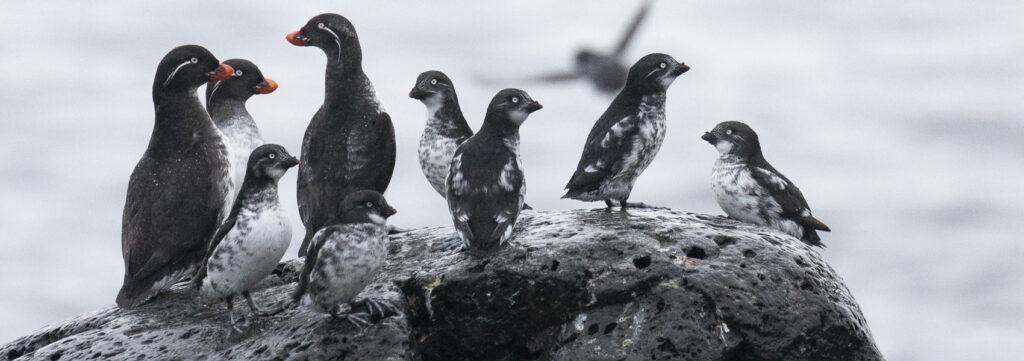
DAY 6: Boat Trip in Kenai Fjords National Park
Today we take an eight-hour boat trip to the Kenai Fjords National Park. The trip will focus on birds, mammals, and natural history and we will be surrounded by some of the most spectacular scenery in Alaska. Birding targets today are many and include species such as Horned and Tufted Puffin, Parakeet Auklet, Rhinoceros Auklet, Brunnich’s Guillemot, Marbled, Ancient, and the rare and localised Kittlitz’s Murrelet. We should also find Pigeon Guillemot, Harlequin Duck, Surf Scoter, Red-faced Cormorant, and Bald Eagle. Depending on weather conditions, a few of the tubenoses are also possible, including Fork-tailed and Leach’s Storm-Petrel. Of course, we will also be looking for mammals such as Humpback Whale, Orca, Steller’s Sea Lion and Sea Otter. Overnight Seward
DAY 7: Seward to Anchorage and internal flight to Barrow
We make the return trip to Anchorage today and then take an afternoon flight to Barrow.
We will have the morning to seek out a few target species we may have missed before heading back to Anchorage for a mid afternoon flight to Barrow, the northernmost city in the United States. Situated well above latitude 71N, the sun doesn’t set here from May 10th to August 2nd. The town sits on the Chukchi Sea side of Point Barrow, the geographic landmark separating the Chukchi Sea to the west and the Beaufort Sea to the east, both within the Arctic Ocean. The weather is highly variable and we should plan for fog, rain, wind, and snow while hoping for sun! Once in Barrow, we will begin birding the tundra, ponds, and waterfront. It’s breeding season here in the arctic and we’ll enjoy a long list of displaying shorebirds and waterfowl. The main targets here are Snowy Owl, Yellow-billed Loon, and of course the Eiders, with all four species possible! Overnight Barrow
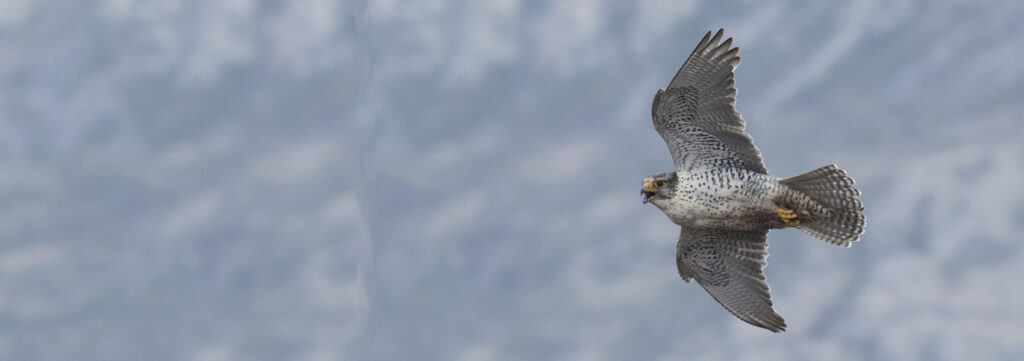
DAYS 8 and 9: Birding Barrow
We have two full days of birding ahead of us!
Probably the most sought after species in Barrow, are the ducks with Spectacled, Steller’s and King Eiders all key targets though we will of course spend time looking for these species. Breeding plumaged shorebirds here are typically confiding and often give great photographic opportunities. Dunlin are numerous, as are Pectoral Sandpiper and the males low display flights and booming call is a familiar sound of the tundra around Barrow. Other shorebirds that should be displaying during our visit include Red and Red-necked Phalarope, Long-billed Dowitcher, Western Sandpiper and Semipalmated Sandpiper. We also hope to find the less common species like American Golden-Plover, Buff-breasted and Stilt Sandpiper. An optional trip to the Point at Barrow can be organised for those that wish.
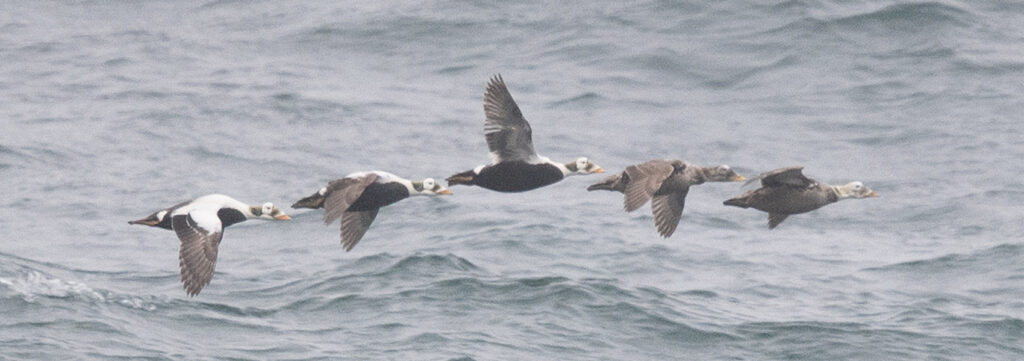
Depending on ice conditions, it is sometimes possible to find Polar Bear in Barrow in June. Barrow Point will be our best chance of finding a bear and although it is becoming increasingly difficult, we will of course try our best and we will remain in contact with local guides. If a bear is sighted, then news usually travels fast! Other mammal possibiliies include Arctic Fox, Ringed, Bearded, and Spotted Seals amongst the sea ice and occasionally Walrus. Overnight Barrow
DAY 10: Birding Barrow – Return flight to Anchorage.
We have most of the day to enjoy birding around Barrow to look for any target species that we may have missed and a final chance for Polar Bear. After an early dinner in Barrow we will then take an early evening flight back to Anchorage. Overnight Anchorage
DAY 11: Anchorage birding
Today will be a day to focus on boreal targets near Anchorage. We will search for American Three-toed and Black-backed Woodpeckers, Spruce Grouse, Canada Jay, and Boreal Chickadee. Depending on tides, we may also check a few Anchorage shorebird spots for late migrants and local breeders.
Overnight Anchorage
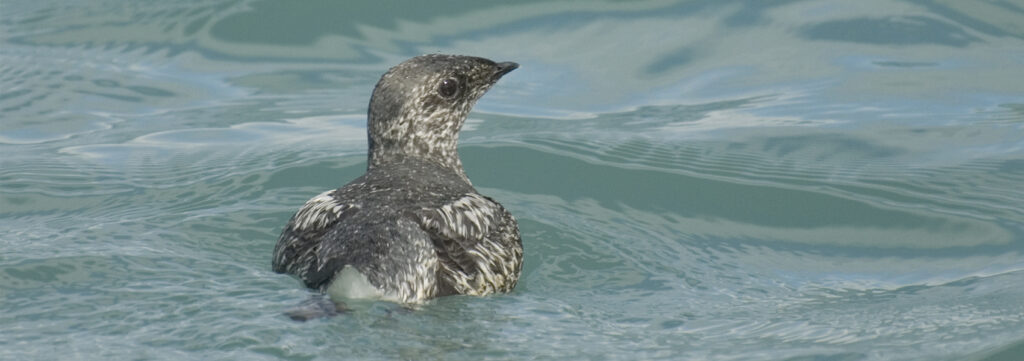
ST PAUL EXTENSION: Monday 24th – Friday 28th June
St. Paul Island is home to literally thousands of seabirds with estimates of a staggering 250,000 birds nesting on the island! The seabird rookeries must be simply be seen to be believed. The islands are famed in particular for the only readily accessible North American location where Red-legged Kittiwakes nest. Other nesting species we should see include Red-faced Cormorant, Thick-billed Murre, Parakeet, Least and Crested Auklets, Horned and Tufted Puffins, Ancient Murrelet, and the endemic races of Pacific Wren, Rock Sandpiper and Gray-crowned Rosy-Finch. The photographic opportunities here are simply fantastic! The Pribilofs also have a large mammal interest. Arctic Foxes are common and the largest single population of Northern Fur-Seals is also located here with around 700,000 breeding animals. There are numerous vantage points and blinds on St. Paul Island from which to view and photograph these animals.
DAY 1: Morning Flight to St Paul
Arrival and first day orientation and birding!
Overnight St Paul Island (Note: hotel here is quite basic but comfortable)
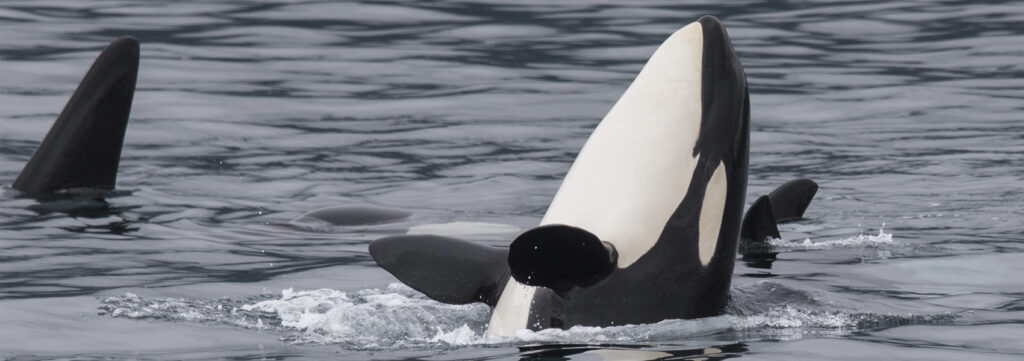
DAYS 2 and 3 : St. Paul Island
We will enjoy two full days to observe and photograph the breeding birds and seals of St. Paul Island. Most of the seabirds are easily viewed from accessible rookeries and photographic opportunities are excellent! We travel around the 14 mile-long island on a well developed road system.
Overnight St Paul Island (Note: hotel here is quite basic but comfortable)
DAY 4: St. Paul Island, afternoon flight back to Anchorage.
We have a final morning to enjoy the wildlife of St. Paul Island before our afternoon flight back to Anchorage.
Overnight Anchorage Hotel
DAY 5: Departure day
Tour concludes after breakfast and we connect with flights back to UK.
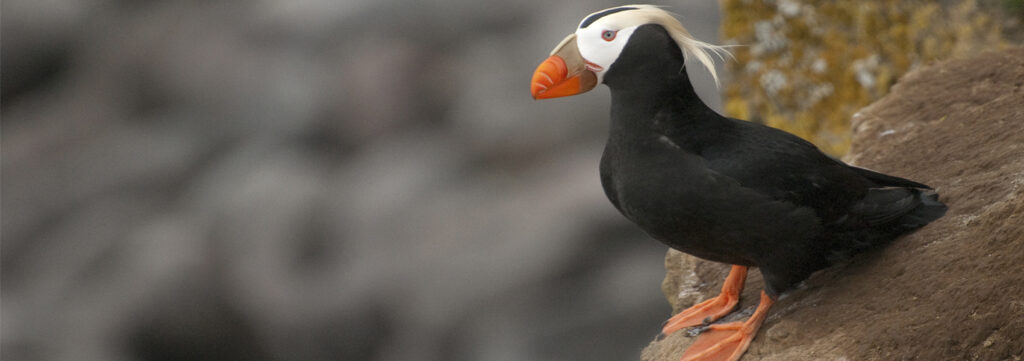
Please note this is a flexible itinerary which may need to be adjusted slightly dependent on arrival / departure times, weather conditions and the most recent information from our local guides
Leaders Main Tour: Wise Birding leader and Aaron Bowman or Aaron Lang.
Leaders Extension: Wise Birding leader and local guide on St Paul Island
Included in cost: Accommodation, ground transport and meals (breakfast and lunches only).
Inclusive breakfast & lunches for main tour start with with breakfast on day 2 and end with lunch on day 10 for the main tour.
Inclusive meals for the St Paul Extension: Breakfast & Dinner on day 1, Breakfast, lunch & dinner on days 2 and 3 and Breakfast and lunch on Day 4.
All entrance fees, all transport including, boat trip in Kenai Fjord NP, plus services of the local guides and leader
Not included in cost: International airfare and internal flights, travel insurance, meals other than those stated above, all alcoholic drinks and any airport/visa fees.
Plus an optional trip to the Point at Barrow.
Single Supplement: Very expensive, so best to share. Main Tour £1,350pp and Extension £300pp
Transport: We will travel in two minibuses throughout the tour giving everyone space and a window seat.
Difficulty: Easy
Walking: While we don’t tend to walk long distances on any particular day in Alaska, daylight hours are very long in the land of the midnight sun! Therefore our time in the field will often mean we are often out early and late in the day which are often best for bird activity. The longest walking day is when trying for Bristle-thighed Curlew. On this day we will be walking on uneven grass hummocks in the tundra for up to 3 miles.
Accommodation: Good quality hotels throughout the tour.
Climate: Highly variable! Anchorage can sometimes be quite warm at this time of year whereas Barrow is likely to be cold, possibly even below freezing. Wind is often present in this region and can make temperatures feel colder too, particularly during the boat trips. Rain is also likely at some point during the tour. Therefore good warm layers and waterproofs are essential.
Tour Start Point: Anchorage airport, USA
Tour End Point: Anchorage airport, USA
Suggested Airlines: United Airlines
